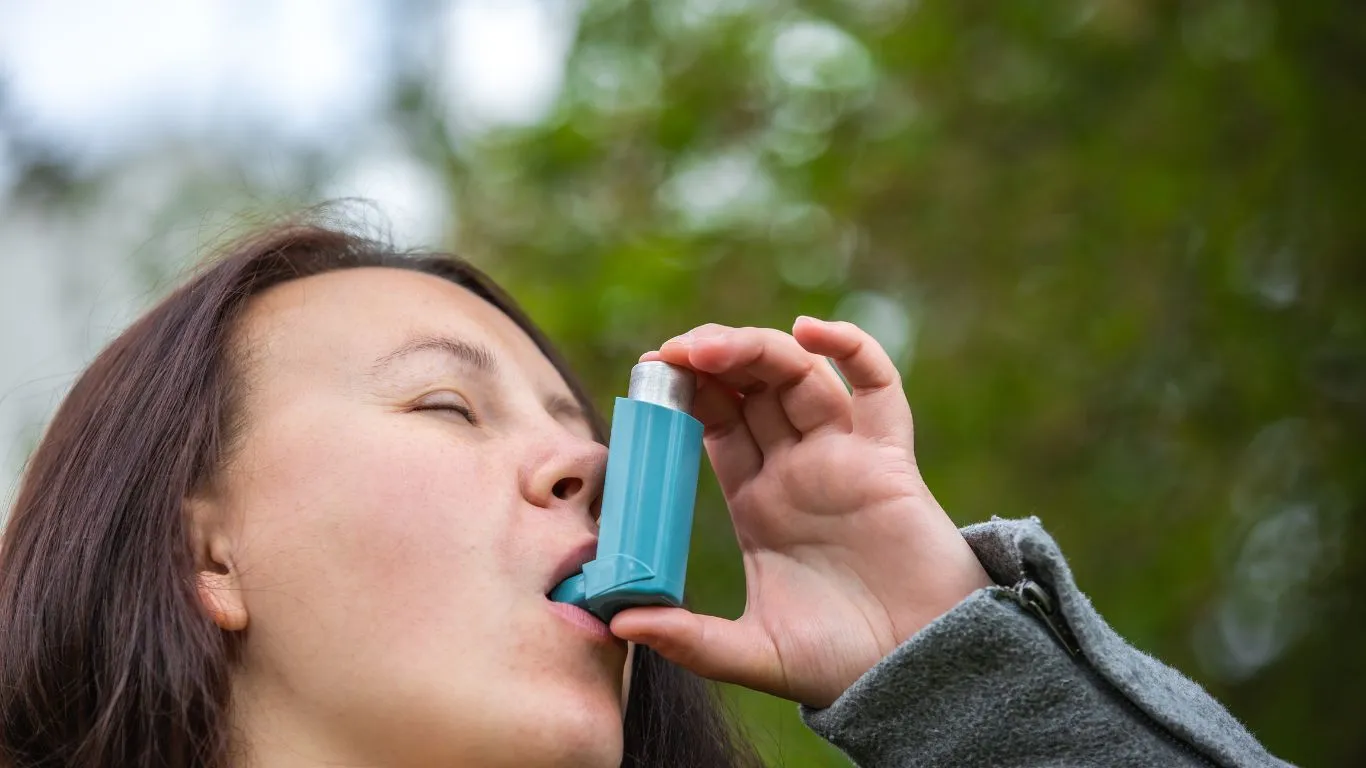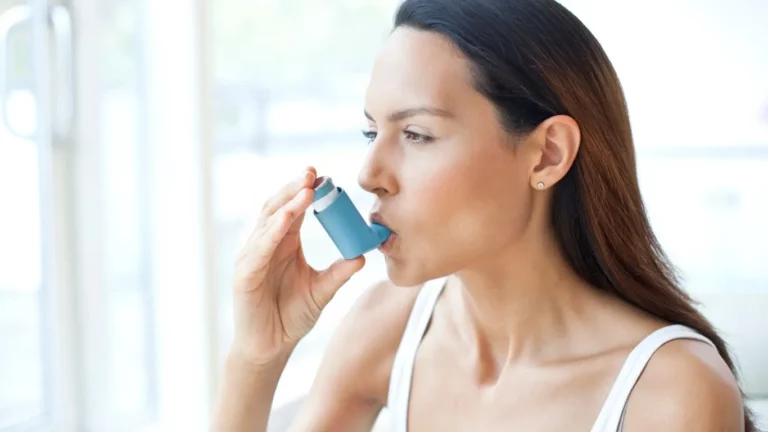Discover the Best Natural Oils for Asthma Massages That Really Work
If you’re living with asthma, you know how important it is to find gentle, effective ways to ease symptoms and breathe a little easier. One natural method that’s been gaining attention lately is using oils during massages to help relax the airways and reduce inflammation. Today, I want to share my insights on the best natural oils for asthma massages, based on both scientific evidence and my years as a pulmonary nurse practitioner. These oils not only smell amazing but can also support your respiratory health in a soothing, holistic way.
Why Natural Oils for Asthma Massages?
When I first started exploring complementary therapies for asthma management, I was skeptical about the role of essential oils in easing respiratory symptoms. But after working closely with patients and seeing the calming effects of certain oils on the chest and back muscles, I quickly realized there’s more to these natural remedies than just aromatherapy. Massaging with the right oils can promote better airflow, reduce tightness, and even decrease anxiety related to breathing difficulties.
What makes natural oils so special is their ability to deliver anti-inflammatory and bronchodilatory benefits directly to the skin, which can complement your existing asthma treatments. Plus, the ritual of a massage itself encourages relaxation, which is a huge factor in managing asthma attacks triggered by stress.

Top Natural Oils Recommended for Asthma Massages
From my experience, here are some of the best natural oils for asthma massages that I often recommend to patients looking for gentle relief:
Eucalyptus Oil
Eucalyptus oil is a superstar when it comes to respiratory health. Its main compound, eucalyptol, has been shown to reduce inflammation and open up the airways. When diluted properly and massaged onto the chest and back, it can help clear mucus and ease breathing.
Pro tip: Because eucalyptus oil is strong, always mix it with a carrier oil like coconut or almond oil before applying it to the skin.
Lavender Oil
Lavender is more than just a pretty scent. Its calming properties can help reduce anxiety and promote better sleep—both of which are essential for asthma management. Massaging lavender oil on the neck and shoulders helps relieve tension that might otherwise contribute to breathing difficulties.
Peppermint Oil
Peppermint oil contains menthol, which acts as a natural decongestant. This can be particularly helpful during an asthma flare-up by opening nasal passages and making breathing easier. I’ve seen patients feel instant relief after a peppermint oil massage around the upper chest area, always combined with a carrier oil to avoid skin irritation.

How to Safely Use Oils for Asthma Massages
Safety is my top priority when recommending essential oils to my patients. Here are some guidelines I always stress:
- Dilution is key: Always dilute essential oils with a carrier oil to reduce the risk of skin irritation or allergic reactions.
- Patch test: Before using any oil extensively, do a small patch test on your skin to check for sensitivity.
- Avoid direct inhalation of strong oils: Some oils, like peppermint and eucalyptus, can be overwhelming if inhaled in high concentrations.
- Consult your healthcare provider: Especially important if you’re pregnant, nursing, or taking asthma medications.
Choosing the Right Carrier Oils
Carrier oils play an important role in how your skin absorbs essential oils. Some of the best carrier oils I recommend for asthma massages include:
- Sweet almond oil: Light, non-greasy, and packed with vitamins A and E.
- Coconut oil: Moisturizing and has its own mild anti-inflammatory properties.
- Jojoba oil: Closely mimics the skin’s natural oils and is great for sensitive skin.

Personal Experience: What I’ve Seen Work
Over the years, I’ve guided many patients in integrating natural oils into their asthma care routine, and the feedback has been overwhelmingly positive. One patient, in particular, shared how nightly massages with a blend of eucalyptus and lavender oils helped reduce their nighttime coughing and improve sleep quality.
It’s important to remember, though, that these oils are complementary — not a replacement for prescribed asthma treatments. But combined with your inhalers and medications, they can be a wonderful addition to your self-care toolkit.
Creating Your Own Asthma Massage Oil Blend
One of the things I love sharing with patients is how simple it can be to create a personalized asthma massage oil blend at home. It’s not just about mixing oils; it’s about crafting a soothing experience tailored to your needs and preferences. Plus, it’s a great way to feel empowered in managing your asthma naturally.
Here’s a basic recipe I often suggest to get started with the best natural oils for asthma massages:
- Start with a carrier oil base — about 2 tablespoons of sweet almond or jojoba oil works well.
- Add 5 drops of eucalyptus oil for its airway-opening effects.
- Add 3 drops of lavender oil to promote relaxation and reduce anxiety.
- Add 2 drops of peppermint oil for that refreshing, decongestant sensation.
This blend can be adjusted depending on what you prefer or tolerate. For example, if you find peppermint a bit too strong, cut back on it or skip it altogether. I always encourage people to listen to their bodies — asthma is unique to each person, and so should be the self-care approach.
When applying, massage gently on your chest, upper back, and shoulders. Avoid applying directly on the throat or face, and remember to wash your hands afterwards to avoid accidental eye contact.

Benefits Beyond the Breath: Why Asthma Massages Matter
Asthma is often more than just physical symptoms — it’s an emotional and psychological experience, too. Stress, anxiety, and poor sleep can all worsen asthma symptoms, creating a tough cycle to break. From my practice, I’ve seen how the simple act of a massage with natural oils can be a powerful tool not just for the lungs, but for the mind and spirit.
Here are some benefits you might notice from regular asthma massages using natural oils:
- Improved breathing: Relaxing tight chest muscles and reducing inflammation can help open up your airways.
- Better sleep: Calming oils like lavender encourage a restful night, which is crucial for managing asthma.
- Stress relief: The ritual of massage and soothing scents can lower cortisol levels and ease anxiety.
- Enhanced circulation: Massaging helps boost blood flow, which supports overall respiratory health.
As a nurse practitioner, I always remind patients that these benefits work best when combined with proper asthma medications and lifestyle choices, such as avoiding triggers and maintaining good hydration.
Real Talk: What to Expect and What Not to Expect
It’s important to keep expectations realistic. While natural oils and massages are wonderful supportive tools, they aren’t a cure for asthma. From my experience, they work best as part of a holistic plan, helping to ease symptoms and improve quality of life rather than replace medical treatments.
Some patients may notice almost immediate relief from chest tightness or congestion, while for others, the benefits come gradually with regular use. I always encourage patience and consistency, just like with any other part of asthma care.
And a quick heads-up — if you notice any irritation, increased coughing, or shortness of breath after using oils, stop immediately and consult your healthcare provider.

Essential Tips for Incorporating Asthma Massages into Your Routine
Starting a new self-care habit can sometimes feel overwhelming, but asthma massages with natural oils can be a relaxing and straightforward addition. Here are some tips from my years working with respiratory patients to help you get the most out of your massage experience:
- Pick a calm moment: Choose a time when you’re relaxed and not rushing — maybe before bed or during a quiet afternoon.
- Create a peaceful environment: Dim the lights, play soft music, and breathe deeply to enhance the relaxation effect.
- Use gentle pressure: Remember, the goal is to soothe, not to cause discomfort or pain.
- Stay consistent: Try to make it a regular practice, whether that’s daily or a few times a week, to notice ongoing benefits.
- Listen to your body: Everyone’s asthma triggers and responses are different — adjust the oils and techniques based on what feels right for you.
What About Children and Asthma Massages?
Parents often ask me if it’s safe to use essential oils for their kids with asthma. The answer is yes, but with extra caution. Children’s skin is more sensitive, so dilution ratios need to be higher — think more carrier oil and fewer drops of essential oil. Also, some oils like peppermint should be avoided in young children due to the risk of respiratory irritation.
Always check with your pediatrician before introducing oils or massage to a child’s asthma routine. When done carefully, gentle massages with safe oils can help children relax and ease mild symptoms.

Wrapping Up Your Knowledge on Natural Oils for Asthma Massages
By now, you’ve learned about some of the best natural oils for asthma massages and how to use them safely and effectively. The combination of expert insight, clinical experience, and natural remedies can create a balanced approach to managing asthma symptoms with kindness to your body.
In the next section, I’ll dive deeper into specific massage techniques and how you can tailor them to your unique asthma journey. Until then, take a moment to breathe deeply and appreciate the small, natural steps you’re taking toward better respiratory health.
Massage Techniques to Maximize the Benefits of Natural Oils for Asthma
Now that you’re familiar with the best natural oils for asthma massages and how to safely use them, let’s talk about how to apply them effectively. Over the years, I’ve found that the way you massage can make a big difference—not just in relaxation but in supporting your breathing.
Here are some gentle massage techniques I recommend incorporating into your routine:
1. Chest and Ribcage Massage
This is probably the most direct area to focus on. Using your palms and fingertips, gently stroke the chest and ribcage in upward and outward motions. This helps loosen tight muscles and encourages deeper breathing.
Try to keep your pressure light but firm enough to feel tension release. The rhythm can be slow and calming, mimicking your breath—inhale while pressing lightly, exhale while releasing. This encourages relaxation and airflow.
2. Upper Back and Shoulder Massage
Tightness in the upper back and shoulders can restrict breathing without you even realizing it. When massaging these areas, use your thumbs to apply gentle circular motions along the shoulder blades and upper spine.
This not only reduces muscle tension but can also help relieve stress—a big asthma trigger. Combine this with deep, slow breathing for an even greater calming effect.
3. Neck and Throat Area (With Caution)
The neck area is delicate, so if you decide to massage here, keep it very gentle. Avoid strong pressure and never apply oils directly on the throat. Instead, lightly stroke the sides of the neck to ease tension and promote relaxation.
If you’re new to massage, it might be best to skip this area or have someone experienced help you.

Incorporating Breathing Exercises with Your Massage
In my experience, combining massage with simple breathing exercises can amplify the benefits for asthma management. When you pair the physical relaxation of massage with conscious breathing, you help your body regulate the airway muscles and reduce inflammation.
Here’s a quick breathing exercise to try alongside your massage routine:
- Find a comfortable seated or lying position. Take a few moments to relax your muscles.
- Inhale deeply through your nose for a count of four, feeling your chest and belly rise.
- Hold your breath gently for a count of four.
- Exhale slowly through your mouth for a count of six, allowing your chest to fall.
- Repeat this cycle for five minutes or as long as it feels comfortable.
Doing this while massaging the chest and upper back with your chosen oil blend can soothe both your body and mind, helping reduce asthma symptoms naturally.
Common Questions I Get About Natural Oils and Asthma
Over the years, patients often ask me some important questions about using oils for asthma. Here are a few answers that might help you too:
Can essential oils trigger asthma attacks?
Yes, they can, if not used carefully. Strong scents or certain oils might irritate sensitive airways. That’s why dilution, patch testing, and choosing the right oils are crucial. If you notice coughing, wheezing, or discomfort after use, stop immediately and consult your healthcare provider.
Is it safe to use oils with my asthma medication?
Generally, yes. Natural oils don’t interfere directly with asthma medications, but always inform your healthcare provider about any complementary therapies you use. That way, your treatment plan stays coordinated and safe.
How often should I do asthma massages?
Consistency matters. Many find that 3-4 times per week helps maintain relaxed airways and reduces stress. But listen to your body—some may benefit from daily sessions, while others prefer less frequent massages.
Can I use these oils if I have allergies?
It depends on your specific allergies. Always check ingredients and do a patch test. If you have known sensitivities, consult an allergist or your healthcare provider before using any new oils.

Final Tips from a Pulmonary Nurse Practitioner
From my years working alongside people managing asthma, I’ve learned that natural oils for asthma massages are a wonderful complement—not a substitute—to your prescribed treatments. Here are some final pointers to keep you safe and get the most from your routine:
- Choose high-quality, pure essential oils. Look for reputable brands that provide transparency about sourcing and testing.
- Practice patience. Natural remedies often take time to show benefits, so be gentle with yourself and consistent in your care.
- Stay informed. Asthma research is always evolving, so keep an open dialogue with your healthcare team about any complementary therapies.
- Keep your environment asthma-friendly. Alongside massage, reduce triggers like dust, smoke, and strong fragrances in your home.
References
- American Gastroenterological Association
- American Lung Association
- National Heart, Lung, and Blood Institute
Disclaimer
The information shared here is based on my professional experience as a pulmonary nurse practitioner and supported by existing research. However, it is not intended to replace medical advice from your healthcare provider. Always consult your doctor before starting any new treatments or complementary therapies, especially if you have asthma or other chronic health conditions.

Bianca Nala is a compassionate Nurse Practitioner with a strong background in primary and respiratory care. As a health writer for Healthusias.com, she combines her clinical expertise with a talent for clear, relatable storytelling to help readers better understand their health. Bianca focuses on topics like asthma, COPD, chronic cough, and overall lung health, aiming to simplify complex medical topics without losing accuracy. Whether she’s treating patients or writing articles, Bianca is driven by a single goal: making quality healthcare knowledge accessible to everyone.






